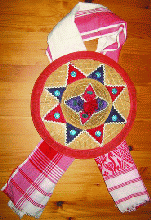Archives
institution
The post independence history of the entire North Eastern Region is that of constant and consistent political struggle by the different ethnic people to achieve their rightful respectable place in the map of the Indian Sub Continent.
Historically with its peculiar geographical position, the North Eastern Region was never a part of the Indian  Empire, the inhabitants of this region are different from the people of the rest of the New Indian Union, in various socio-cultural aspects. Also during the post independence era till now, the Indian Union has given enough reason to complain that it views this region with a colonial outlook and does not bother to feel the pulse of the people of North East. Most of the ethnic people believe that so called main stream India is interested in tapping the natural resources of this region for their own benefit and not for the welfare and progress of its people. This dissatisfaction has given birth to various peoples movements, sometimes peaceful and sometimes violent.
Empire, the inhabitants of this region are different from the people of the rest of the New Indian Union, in various socio-cultural aspects. Also during the post independence era till now, the Indian Union has given enough reason to complain that it views this region with a colonial outlook and does not bother to feel the pulse of the people of North East. Most of the ethnic people believe that so called main stream India is interested in tapping the natural resources of this region for their own benefit and not for the welfare and progress of its people. This dissatisfaction has given birth to various peoples movements, sometimes peaceful and sometimes violent.
Asom Sahitya Sabha maintaining its stand in support of the peoples rightful democratic peaceful movement, and opposing all violence, is playing an important role in the making of a multi ethnic, multi culturally vibrant, fast developing society.
The Sabha is always in direct and living contact with the motive forces of the inner life of each successive generation, learning directly how the generation looks at life, thinks about it, by what passions it is most deeply stirred, by what standards of conduct and taste it is governed.
Because of this direct living contact with the people of this region, Asom Sahitya Sabha has grown into a mass peoples organisation.
During its 88 year old life, the Sabha has done tremendous good work in the socio cultural, literary field of the region.
The Sabha, while continuing its literary programmes like publishing books, holding innumerable meetings, seminars, research work, has also devoted itself to social causes like public health, conservation of environment, public awareness regarding relevant issues, educational and economic development, abolition of all types of discrimination and biases against women etc. Recently it has declared a five point programme on these issues.
Starting with the first president Padmanath Gohain Baruah, a literary and intellectual giant of the late 20th Century, a total of sixty four persons of great talent, nobility and virtue have adorned the coveted chair of the president of Asom Sahitya Sabha. Padmanath Gohain Baruah was selected as the first president when Sabha came into existence in 1917. In his first public speech as the president, he said, “There is no other easy way to express national feeling, aspirations, thoughts, spirit and talent than one’s own language and literature. Also literature is one step ahead of language. That is why national literature always represents national identity. Ethnic dress, tradition, religion etc are not sufficient in themselves for national identity, they all depend on and come next to literature.”
Though, the spirit remains the same, yet the Sabha has undergone tremendous change in every aspect. Each of the President has his/her own social, ideological vision, by which his work function is directed. However, none of them has tampered with the basic aim and guidelines of the Sabha.
A lot has been done and a lot remain to be done. Society is dynamic, so is the Sabha. But the Sahitya Sabha must learn from its past mistakes and try never to repeat them, in the interest of the people of Greater Assam and the whole of the North Eastern region. It must be able to gain faith and confidence of people of our neighbouring states and act as a bridge between the people of this Region. No Government can do this.
The number of publications of the Assam Sahitya Sabha is 171 comprising reprint and critical appraisal of old Assamese literature; children’s literature; Anthology of creativity of eminent writers, work and analysis on the languages of our neighbouring states; dictionaries; critical appraisal of literature of other Indian states; grammar; culture language and tradition of different ethnic groups of Assam; Books of philosophy about the recent publication of the ‘Cultural History of Assam’ by noted writer, economist Jatindra Borgohain, which in itself is complete research work.
1) The number of wards given by Asom Sahitya Sabha is about 38. Also, there are 12 (twelve) trusts for different good work.
2) Regular permanent Agenda of the Sabha.
A. Arunodoi Dibash (Day). 1st January
B. Jyoti Divash — 17th Jan
C. Sahitya Sabha Week : 17th 23nd Jan.
D. Radhkamta Sandikoi (Handique) social day: 26th March
E. Sahitya Divash ( In memory of Laxminath Bezbarman): 26th March
D. Bishnuprasad Rabha Divash: 20th June.
E. Chandrakamta Indra Kanta Memory day: 9th September
F. Harmony Day (In Memory of Asom Keshari Ambikagiri roy Choudhuri)
G. Sarat Ch. Goswami Smriti Divash: 19th Dec
A. Padmanath Gohain Baruah day: 26th Dec.
I. Birthday of Asom Sahitya Sabha— 27th December
3) The titles conferred by Asom Sahitya Sabha :
1. Rasharaj
2. Member Noble (Sadashya Mohian)
3. Kabya Varati.
4. Sahityacharya.
It is almost impossible to deliver a speech or a writing on this massive literary mass organisation of Assam, which has become a symbol of national identity of Assam.
(The views expressed here are entirely the writer’s)

